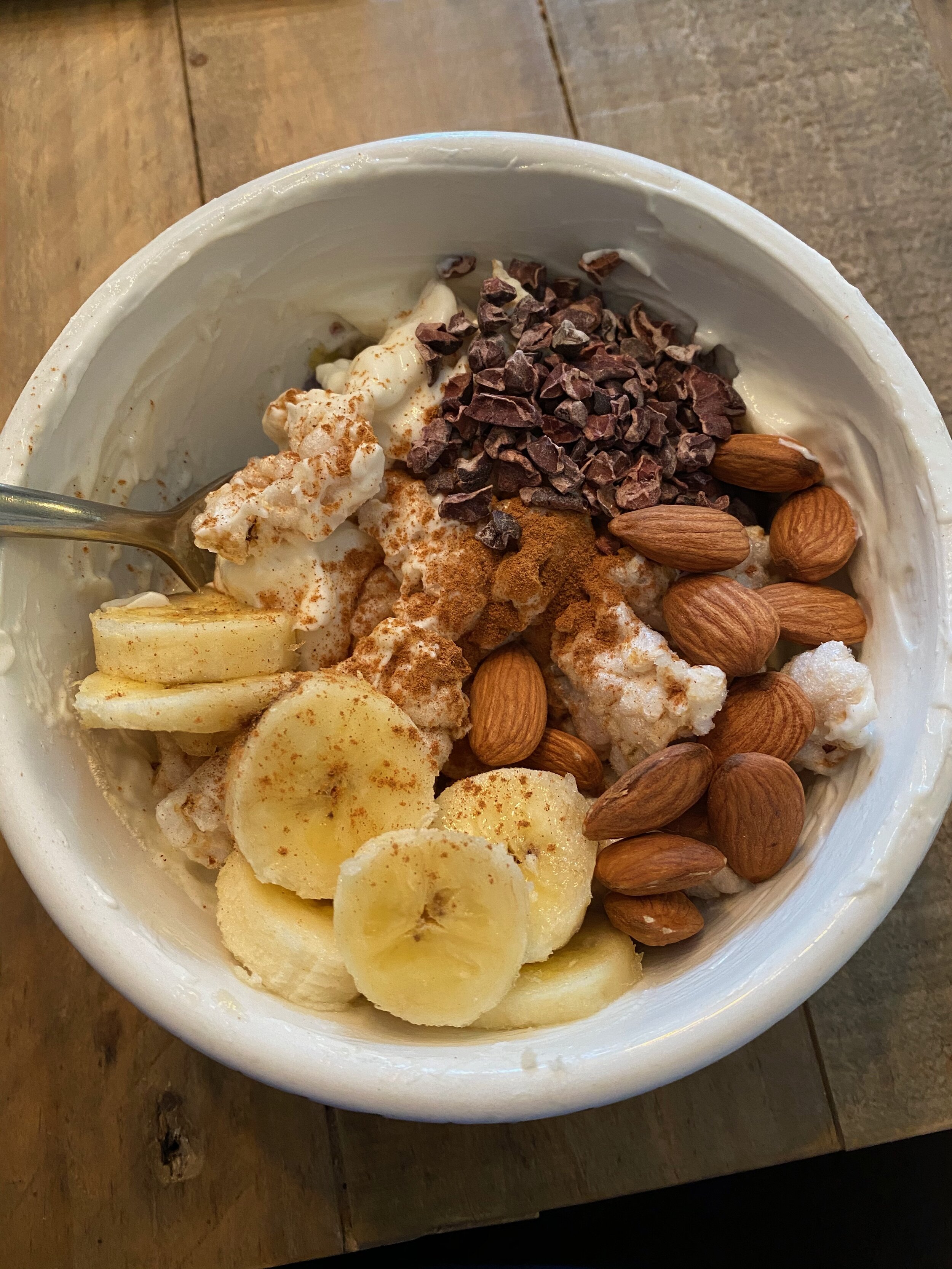07 Apr High Protein Snacking
Adequate high quality protein can improve satiety, help manage weight, help manage blood sugar and prevent high blood pressure.
Optimal protein intake is between 1.2-2 g/kg of body weight. Depending on age, activity level, and lean body mass.
Protein is digested slower so we don’t get the rapid spikes in blood sugar.
Distributing protein intake evenly across the day helps to maximize the body’s muscle repair and building machinery especially after the age of 30.
In meal terms, for many adults this means aiming for at least 25 to 30 g protein per meal. With high protein snacks between.
Animal proteins generally have all essential amino acids.
Plant foods contain protein as well, typically in lower amounts/serving. Plant sources of protein include nuts, seeds, beans, and whole grains.
Including a variety of plant & animal foods is the simplest way to meet your goals!
You can definitely meet your needs on a vegetarian diet, you just have to pay close attention to your diet and get a variety of plant based proteins.
MYTH: Animal protein is more easily absorbed than plant protein
Plant proteins from whole plant foods are SLIGHTLY less digestible (10-20%) than animal proteins mainly due to the fiber content interfering with absorption.
Animal proteins (dairy, eggs, meat & fish) contain more leucine than plant based proteins. Leucine is an amino acid critical for muscle protein synthesis.
Meaning: we need to eat more plant based protein to get adequate leucine. Soy foods are higher in leucine of plant sources.
Plant based proteins are packed with fiber, healthy fats (mono & polyunsaturated), and phytochemicals.
Conclusion: Eat a varied diet of both plant & animal protein sources <3
Protein Snacks
Turkey & Cheese rolls ups
LF Greek Yogurt & Nuts
Edamame
LF Cottage Cheese & Pumpkin seeds
Boiled Eggs
Cheese Stick & Apple
Protein Bar
LF Milk & Protein Powder
Banana & Peanut Butter


